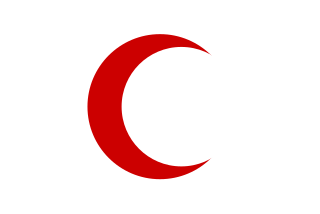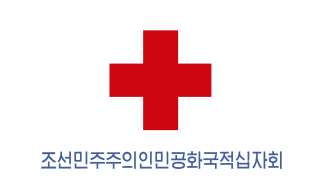
The International Red Cross and Red Crescent Movement is an international humanitarian movement with approximately 97 million volunteers, members and staff worldwide, which was founded to protect human life and health, to ensure respect for all human beings, and to prevent and alleviate human suffering. Within three distinct organizations that are legally independent from each other, but are united within the movement through common basic principles, objectives, symbols, statutes and governing organisations, there are the International Committee of the Red Cross (ICRC), that is a private humanitarian institution founded in 1863 in Geneva, Switzerland, in particular by Henry Dunant and Gustave Moynier. Its 25-member committee has a unique authority under international humanitarian law to protect the life and dignity of the victims of international and internal armed conflicts. The ICRC was awarded the Nobel Peace Prize on three occasions.

Humanitarian aid is material and logistic assistance to people who need help. It is usually short-term help until the long-term help by the government and other institutions replaces it. Among the people in need are the homeless, refugees, and victims of natural disasters, wars, and famines. Humanitarian relief efforts are provided for humanitarian purposes and include natural disasters and man-made disasters. The primary objective of humanitarian aid is to save lives, alleviate suffering, and maintain human dignity. It may, therefore, be distinguished from development aid, which seeks to address the underlying socioeconomic factors which may have led to a crisis or emergency. There is a debate on linking humanitarian aid and development efforts, which was reinforced by the World Humanitarian Summit in 2016. However, the conflation is viewed critically by practitioners.

The emblems of the International Red Cross and Red Crescent Movement, under the Geneva Conventions, are to be placed on humanitarian and medical vehicles and buildings, and to be worn by medical personnel and others carrying out humanitarian work, to protect them from military attack on the battlefield. There are four such emblems, three of which are in use: the Red Cross, the Red Crescent, and the Red Crystal. The Red Lion and Sun is also a recognized emblem, but is no longer in use.

The International Committee of the Red Cross is a humanitarian organization based in Geneva, Switzerland, and a three-time Nobel Prize Laureate. State parties (signatories) to the Geneva Convention of 1949 and its Additional Protocols of 1977 and 2005 have given the ICRC a mandate to protect victims of international and internal armed conflicts. Such victims include war wounded, prisoners, refugees, civilians, and other non-combatants.
The Code of Conduct for International Red Cross and Red Crescent Movement and NGOs in Disaster Relief was drawn up in 1992 by the Steering Committee for Humanitarian Response (SCHR) to set ethical standards for organizations involved in humanitarian work. In 1994, the SCHR adopted the code and made the signing of it a condition for membership in the alliance.
There are a number of meanings for the term humanitarian. Here humanitarian pertains to the practice of saving lives and alleviating suffering. It is usually related to emergency response whether in the case of a natural disaster or a man-made disaster such as war or other armed conflict. Humanitarian principles govern the way humanitarian response is carried out.

The International Federation of Red Cross and Red Crescent Societies (IFRC) is a worldwide humanitarian aid organization that reaches 160 million people each year through its 192-member National Societies. It acts before, during and after disasters and health emergencies to meet the needs and improve the lives of vulnerable people. It does so with impartiality as to nationality, race, gender, religious beliefs, class and political opinions.

The Qatari branch of the Red Crescent Society, the Qatar Red Crescent (QRC), was established in 1978. In 1981, it gained international recognition from the International Committee of the Red Cross in Geneva and joined the International Federation of Red Cross and Red Crescent Societies (IFRC). It is also a member of the Secretariat of Arab Red Crescent Societies in Jeddah. It became the first philanthropic organization in Qatar to establish a women's branch in 1982.

The Belgian Red Cross is a humanitarian organization that aids in providing emergency and disaster related services and relief as well as providing education for disaster awareness within the population of Belgium. It is a member of the International Federation of Red Cross and Red Crescent Societies.
Mali Red Cross, also known as CRM, was founded in 1965 on the basis of the Geneva Conventions of August 1949 and of the order of 59 PCG 28 March 1959 governing associations and NGOs in the Republic of Mali. It is headquartered in Bamako. The primary goal of the Mali Red Cross is to provide aid to people suffering the combined effects of armed conflict, promote nutrition and health, and provide assistance during food shortages. The International Federation of Red Cross and Red Crescent Societies (IFRC) recognized the Mali Red Cross on September 14, 1967 as the 109 national society of the Red Cross and Red Crescent Societies.
The society Lithuanian Red Cross, in Lithuanian Lietuvos Raudonasis kryžius, was founded in 1919. It was reestablished after the collapse of the Soviet Union. The Seimas, the Lithuanian parliament, passed a Red Cross law in 2000. The society has its headquarters in Vilnius, the capital of Lithuania.

The Iranian Red Crescent Society (IRCS), officially the Red Crescent Society of the Islamic Republic of Iran is a non-governmental humanitarian organization in Iran. Founded as the Red Lion and Sun Society in 1922, it became affiliated with the International Federation of Red Cross and Red Crescent Societies (IFRC) in 1924 and changed its name and emblem in 1980, informing the international community of Hilal Ahmar adoption while assuming the right to adopt the former emblem in future.
The Colombian Red Cross is a Colombian-based nonprofit private entity member of the International Red Cross and Red Crescent Society. It has been a member since 1922. The Colombian Red Cross embraces the principles of the International Red Cross. It provides humanitarian aid to people in need of protection, protection of life and health during armed conflict and disaster relief during emergencies within the Colombian territory. The Colombian Red Cross has played a major humanitarian role within the Colombian Armed Conflict as a mediator in the area of Human rights.
The Inter-Agency Standing Committee (IASC) is an inter-agency forum of UN and non-UN humanitarian partners founded in 1992, to strengthen humanitarian assistance. The overall objective of the IASC is to improve the delivery of humanitarian assistance to affected populations. The Committee was established following UN General Assembly Resolution 46/182 and resolution 48/57 confirmed that it should be the primary method for inter-agency coordination. The committee is chaired by the Emergency Relief Coordinator Mark Andrew Lowcock

The Syrian Arab Red Crescent (SARC) is a humanitarian nonprofit organization. Its headquarters are in the Syrian capital city of Damascus. The society was founded in Damascus, Syria in 1942, and admitted to the International Committee of the Red Cross (ICRC) in 1946. Some of founders included were Abdul-Kader Zahra, Jamil Kabara, Sami Al-Meedani, Shafiq Diyab, Mustafa Shawky, Ahmed Kadary, Wade Saydawy, and others. The society is part of the International Federation and has been recognized by the ICRC. The SARC has 14 branches all over Syria and 75 sub-branches. Volunteer based, the SARC has around 11,000 trained volunteers that work in the areas of first aid, first aid training, disaster response & relief, psycho-social support, and health in general. SARC also partners with local charity organizations and works with the relevant components of the Syrian community, with UN agencies and NGOs.

The Saudi Red Crescent Authority (SRCA) is a humanitarian society that provides emergency medical services in five administrative regions of the Kingdom of Saudi Arabia. It was founded in 1934 by the name "Saudi Red Crescent Association", which was later amended to "Saudi Red Crescent Authority" in 2008. By 2009, the Society had 447 First Aid Centers, run by 5,507 staff, with 1300 ambulances which are distributed in all hospitals and centres around the country. The Red Crescent has a particular role to play during Hajj, providing on-the-spot first aid and using its fleet of vehicles to take emergency cases to the nearest medical facility.
The Maldivian Red Crescent (MRC) is an independent, volunteer, non-profit, humanitarian organization established in the Maldives by virture of the Maldivian Red Crescent Act Law No: 7/2009

The Red Cross Society of the Democratic People's Republic of Korea is the national Red Cross Society of North Korea. It was founded as the Red Cross Society of North Korea on 18 October 1946.

Mamia Chentouf (Arabic: ماميا شنتوف, was an Algerian midwife, independence activist and founder of the first women's rights organization in Algeria. Encouraged by her family to become educated, she attended the University of Algiers and completed training as a midwife. During her schooling, she joined the Algerian Independence Movement, which sought to free the country from French colonial rule. Using her work as a midwife to make contacts with other women, she rallied them to the nationalist cause and founded the first women's rights organization in the country. As part of the militant group, she was exiled, arrested and then fled to Tunis, Tunisia in 1955. While living there, she was one of the founders of the Algerian Red Crescent Society. At the end of the Independence War she became a journalist, returned to Algiers and studied political science. She served as organizer of the National Union of Algerian Women and was successful in creating family planning centers. Frustrated at an inability to change the family code to prohibit polygamy, she retired from politics in 1969.
The Belarusian Red Cross Society is a Belarusian humanitarian organization and a member of the International Red Cross and Red Crescent Movement. Its purpose is to prevent and alleviate human suffering wherever and whenever it occurs, voluntarily and without discrimination.












